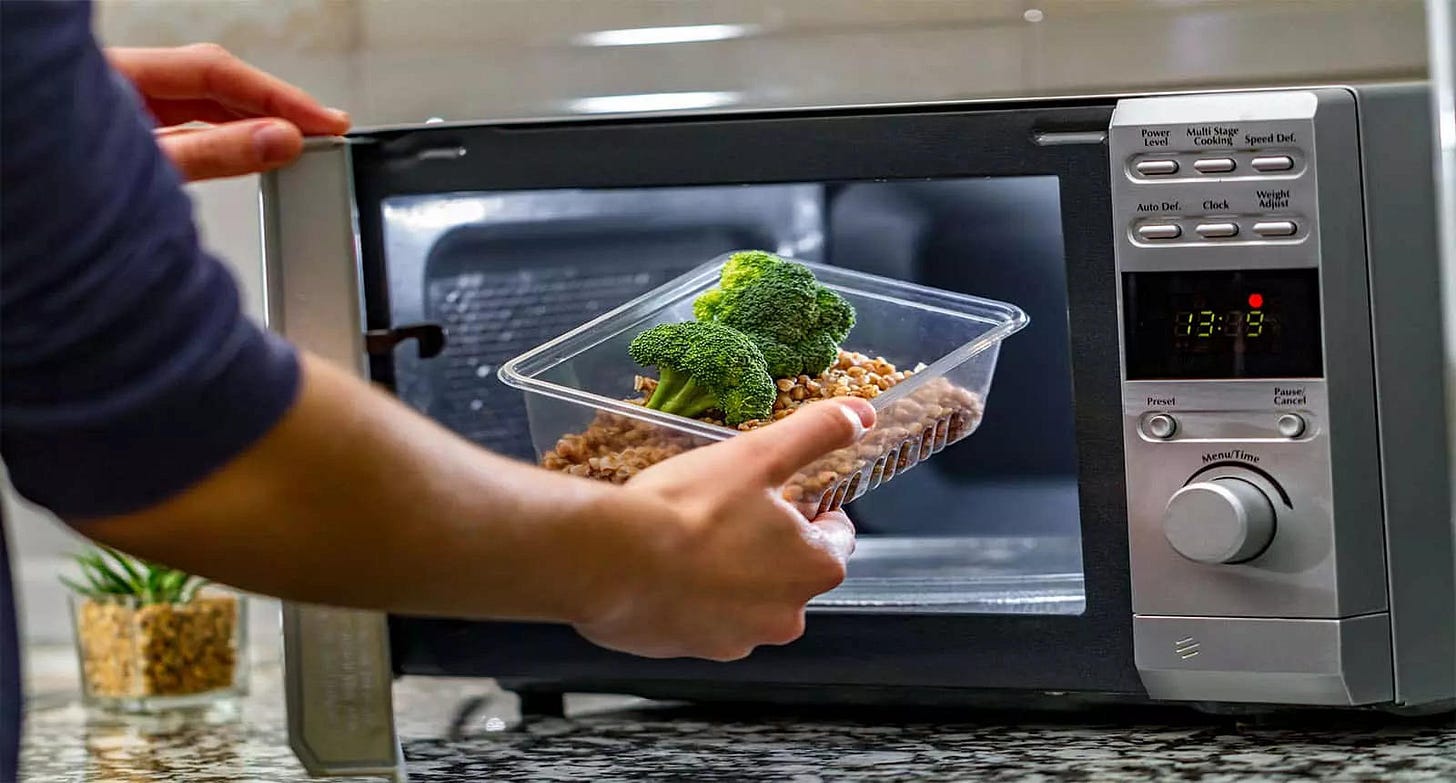How do microwaves heat food?
Picture this: you've just gotten home after a long day, and you're famished. Fortunately, a steaming bowl of your favorite microwavable dinner is just minutes away. You pop it into the microwave, press a few buttons, and as the soft humming and revolving spectacle begins, you wonder: How does this little box of magic turn my frozen meal into a feast?
It may feel like magic, but the answer is deeply rooted in the wonderful world of physics! Let's get cozy and unravel the thrilling, somewhat invisible, dance between microwaves and our food.
The Spotlight's on Microwaves!
Microwaves, despite their mystical, futuristic aura, are nothing more than electromagnetic waves, cousins to the light we see or the radio waves we hear. Imagine the waves you see when you toss a stone into a lake; microwaves are like that, but much tinier and zippier!
As their name implies, microwaves have a smaller wavelength—about the size of a chocolate chip. These waves zip along at the speed of light (no slouching here!) and are particularly fond of water, fats, and sugars - the stuff your food is made of. Now, we're getting into the sizzling heart of our story!
Microwave's Enchanting Waltz with Food
Microwaves are invisible to the human eye, but when they hit the stage (in our case, the microwave oven), their performance is simply spectacular. They penetrate food, making water, fat, and sugar molecules do a frenzied jiggle dance. This jiggle is, in science parlance, 'heat.' That's right - when things heat up, they're just shaking more energetically!
When you turn on your microwave, it creates these waves using something called a magnetron. These waves bounce around inside the microwave oven until they're absorbed by the food. As they meet the food's molecules, they make them spin and jiggle around - kind of like when you hear your favorite song and can't help but groove to the beat.
In particular, water molecules are exceptional dancers, twirling around as they absorb the energy from the microwaves. This twirling, twisting, and turning generates heat through friction, and before you know it, your food gets warmed up. It's sort of like how you get warmer when you dance around!
A Dance That’s More than Skin Deep
Unlike other cooking methods that heat the food from the outside in, microwaves get the whole dance party started at once. The waves penetrate into the food, getting all the molecules in there moving. However, they don't go all that deep - usually only about an inch or so. For larger foods, the heat from the outer layers dancing their way to a fever pitch then helps to cook the inner portions.
The dance isn't always even, which is why sometimes you might find hot spots and cold spots in your food. That’s because microwaves can't quite reach everywhere evenly, and some parts of the food end up doing the waltz while others are stuck in a slow foxtrot. This is why most microwave ovens have a revolving glass turntable to ensure the food moves around, helping the waves reach—and heat—more evenly.
Encore!
Keep reading with a 7-day free trial
Subscribe to The BURNER * to keep reading this post and get 7 days of free access to the full post archives.





